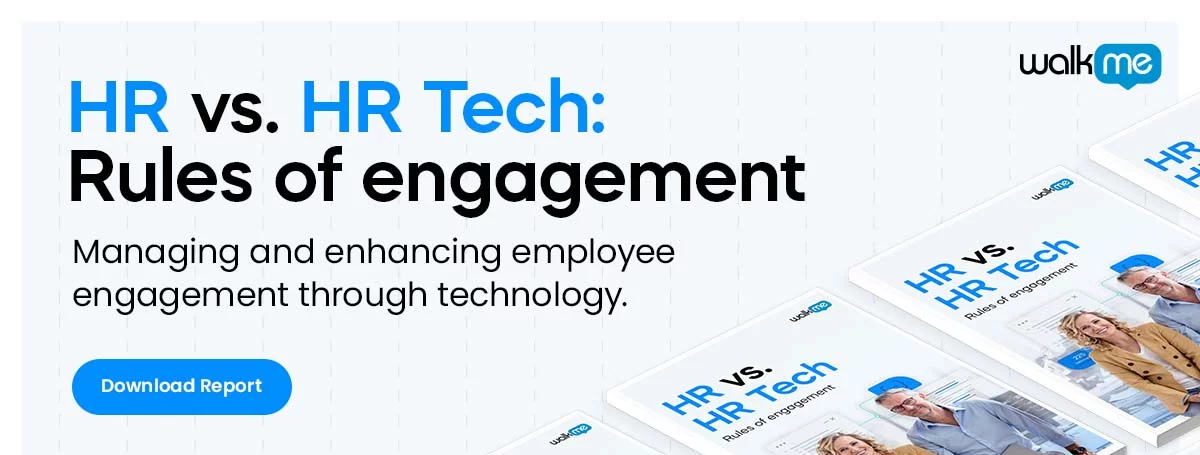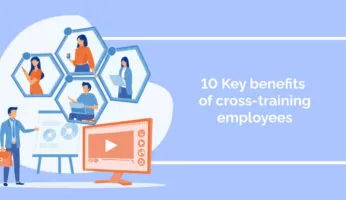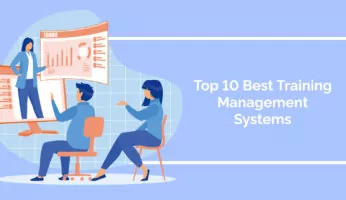
HR managers can deliver tangible value to their organization by optimizing each stage of the employee journey, from recruitment to offboarding (outboarding).
In this post, we’ll look at this journey in-depth and cover:
- Each stage in the employee life cycle
- What goals and metrics to use during each stage
- Best practices to adopt at each point along the journey
A structured framework such as an employee journey map can streamline workflows, lighten workloads, improve workforce-related business outcomes, and more.
Let’s get started.
The Employee Journey Map: From Beginning to End
There are several different models of the employee experience, each with a different emphasis.
One useful model is that offered by Gallup, which outlines the employee experience as a seven-stage journey, beginning with recruitment and ending with departure. The stages we’ll look at below are closely aligned with this model, with a few extra perspectives thrown in from other sources.
Recruitment
Recruitment is the first stage of the employee journey, corresponding to “attract” and “hire” in Gallup’s model.
As HR professionals know, recruitment plays an important role in:
- Shaping the company culture
- Establishing a harmonious work environment
- Acquiring the best talent
- Employee retention and turnover
While recruitment costs can be a concern, those costs must carefully be weighed against the costs of hiring the wrong person – which can result in turnover, an even costlier problem.
For that reason, it is usually best to focus on hiring the right person with the right mix of skills and personality traits.
Employee Onboarding
Onboarding is another important aspect of the employee journey since it sets the tone for the rest of the employee’s life at the company. Ideally, it should continue for several months, if not a year, since employee productivity rarely reaches its full potential until several months to a year (depending on the nature of the job).
During this stage, it is important to:
- Focus on making a good impression
- Integrate employees into the company’s social environment and culture
- Ensure that employees are fully aligned with the company’s mission and values
- Tune into employees’ needs and feelings
Metrics such as time-to-competency, employee sentiment, and coworker sentiment can be useful. They can tell managers how well employees are integrating into the workplace – or not.
Employee Training, Engagement, and Performance
As a new hire becomes more integrated within the workplace, employee productivity will gradually become a more central measure of performance.
The central three stages in the employee journey, therefore, emphasize:
- Engaging employees with their job and their teams
- Training employees to ensure they have the requisite skills and knowledge
- Improving performance and increasing output
When addressing these areas, managers and HR personnel should focus on both the “soft” and “hard” sides of the performance equation.
The hard, or structural, side of the employee experience includes measurable components such as:
- Employee skills
- Tools and software
- Business processes and workflows
The softer, less tangible aspects of the business, include:
- Team dynamics
- Organizational culture
- Management
- Organizational communication
Since both aspects of the employee experience impact individual employees – and therefore the workforce as a whole – it is crucial to measure them throughout the employee life cycle.
Managers should focus on a set of metrics that include everything from employee productivity and proficiency to employee sentiment.
Employee/Career Development
While employee training focuses on short-term skills development, career development is a long-term proposition. Not all companies emphasize career development, but those that do stand a greater chance of building a workforce that is upwardly mobile, skilled, and fully engaged.
Career development options can vary widely from business to business, but they tend to focus on programs such as:
- Mentorship programs
- Coaching programs
- Management and leadership training
- Sponsorship for external learning opportunities, such as certification programs and seminars
The larger an organization is, the more it can benefit from investing in its own employees through career development programs. Programs such as these should naturally focus on those employees who are equally invested in the organization – but not all are, which is why it is also important to have a structured departure process for those that leave.
Offboarding/Outboarding
Offboarding refers to a structured departure process that is initiated when employees leave a company.
During this stage, it is important to:
- Acquire company property, such as IT hardware and office equipment
- Maintain security by closing out IT accounts and restricting access to the business
- Leave a positive impression on employees, which can improve employer branding
- Learn more about the employee experience through exit surveys and interviews
The departure process tends to receive less attention than other stages in the employee life cycle, such as employee onboarding. Yet it does affect employees’ perception of the company and it can even assist with the recruitment of other workers in the future.
In short, offboarding is just as much a part of the employee life cycle as the other processes covered here – and it can add value to the organization, so it is important to continually monitor and improve this process.
WalkMe Team
WalkMe spearheaded the Digital Adoption Platform (DAP) for associations to use the maximum capacity of their advanced resources. Utilizing man-made consciousness, AI, and context-oriented direction, WalkMe adds a powerful UI layer to raise the computerized proficiency, everything being equal.



